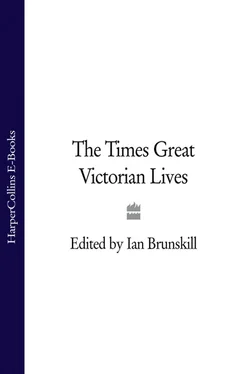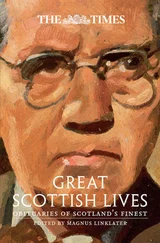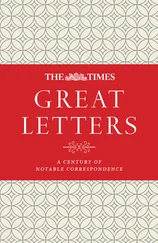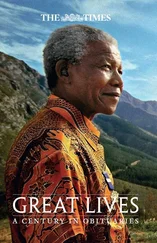In 1855 the Victoria gold medal of the Geographical Society was awarded to Livingstone in recognition of his services to science by ‘traversing south Africa from the Cape of Good Hope, by Lake Ngami, to Linyanti, and thence to the western coast in 10 degrees south latitude.’ He subsequently retraced his steps, returning from the western coast to Linyanti, and then – passing through the entire eastern Portuguese settlement of Tete – he followed the Zambesi to its mouth in the Indian Ocean. In the whole of these African explorations it was calculated at the time that Livingstone must have passed over no less than 11,000 miles of land, for the most part untrodden and untraversed by any European, and up to that time believed to be inaccessible.
In 1856 Livingstone returned to England, to use the eloquent words of his firm friend, the late Sir Roderick Murchison, –
‘As the pioneer of sound knowledge, who by his astronomical observations had determined the sites of various places, hills, rivers and lakes, hitherto nearly unknown; while he had seized upon every opportunity of describing the physical features, climatology, and even geological structure of the countries which he had explored, and pointed out many new sources of commerce as yet unknown to the scope and enterprise of the British merchant.’
The late Lord Ellesmere bore similar testimony to the importance of his discoveries, adding his warm approval of the ‘scientific precision with which the unarmed and unassisted English missionary had left his mark upon so many important stations in regions hitherto blank upon our maps.’
It may possibly be remembered that in a letter published in our columns on the 29th of December, 1856, Dr. Livingstone publicly stated his views and convictions upon the question of African civilization in general, and strongly recommended the encouragement of the growth of cotton in the interior of that continent, as a means towards the opening up of commercial intercourse between this country and the tribes of Southern and Central Africa. Such measures, if adequately supported, he considered, would lend, in the course of time, to the graduate but certain and final suppression of the slave trade, and the proportionate advancement of human progress and civilization.
Early in the spring of 1858 Livingstone returned to Africa for the purpose of prosecuting further researches and pushing forward the advantages which his former enterprise had to some extent secured. He went back with the good wishes of the entire community at home, who were deeply touched by his manly, modest, and unvarnished narrative, and by the absence of all self-seeking in his character. He carried with him the patronage and encouragement and the substantial support of Her Majesty’s Government (more especially of Lords Clarendon and Russell), and of the Portuguese Government also; and before setting out on his second expedition in that year he was publicly entertained at a banquet at the London Tavern, and honoured by the Queen with a private audience, at which Her Majesty expressed, on behalf of herself and the Prince Consort, her deep interest in Dr. Livingstone’s new expedition. In the meantime a ‘Livingstone Testimonial Fund’ was raised in the city of London by the liberal subscription of the leading merchants, bankers, and citizens, headed by the Lord Mayor. Within a very few months from the time of leaving England, Dr. Livingstone and his expedition reached that part of the eastern coast of Africa at which the Zambesi falls into the ocean; her two small steamers were placed at their disposal, and they resolved to ascend the river and thence make their way into the interior. Passing over the details of the expedition, a full account of which is given in the Narrative published by himself and his brother in 1865, we may state that in these journeys Livingstone and his companions discovered the lakes Nyassa and Shirwa, two of the minor inland meres of Africa, and explored the regions to the west and north-west of Lake Nyassa for a distance of 300 miles – districts hitherto unknown to Europeans, and which lead to the head waters of the north-eastern branch of the Zambesi and of several of that river’s tributaries. The geographical results of the expedition, then, were the discovery of the real mouths of the Zambesi and the exploring of the immense territories around that river and its tributary, the Shire – results which not only possess much interest, but may prove hereafter of great value if this part of Africa can be brought within the sphere of civilization and commerce. It was hoped, indeed, at one time, that this exploration of the Zambesi would lead to a permanent settlement of Christianity on the banks of that river; but the first head of that mission, sent out mainly by Oxford and Cambridge – Bishop Mackenzie – soon fell a victim to the climate; and the mission itself was abandoned as hopeless by his successor, Bishop Tozer. The fact was that we had endeavoured to plant the tree before the land was dug up and prepared to receive it.
In this second work, the Narrative, which was written in the hospitable abode of Newstead Abbey, in the autumn and winter of 1864-65, the author tells his own story with a genuine modesty and yet a native force which carries the reader irresistibly onwards. Like its precursor, it obtained a sale of upwards of 30,000 copies. In its pages he sums up the positive results of his researches as the discovery of a large tract offertile soil, rich in cotton, in tobacco, and in timber, though subject to periodical droughts, and also the establishment of an excellent port, the capacities of which had been overlooked by previous travellers. It is only fair to add that some of those results have been disputed by independent writers, who, however, have never visited those parts. Still, it is no slight thing to be able to boast, as Dr. Livingstone could boast, that by means of the Zambesi a pathway has been opened towards Central Highlands, where Europeans, with their accustomed energy and enterprise, may easily form a healthy and permanent settlement, and where, by opening up communications and establishing commercial relations with the friendly natives, they may impart Christianity and that civilization which has for centuries marked the onward progress of the Anglo-Saxon race. This expedition, it is right to add, originated among the members of the Geographical Society, and Livingstone was aided in it from first to last, not only by the support of Her Majesty’s Government, but by the counsel of Captain Washington, the Hydrographer to the Admiralty, Commander Bedingfield, R. N., Dr. Kirk, of Edinburgh, Mr. Baines, of African and Australian fame, and by his ever faithful friend and companion, his devoted wife. By their assistance he was enabled, to use the expression of Sir R. Murchison, ‘to reach the high watersheds that lie between his own Nyassa and the Tanganyika of Burton and Speke, and to establish the fact that those lakes did not communicate with each other; and that, if so, then there was, to say the least, a high probability that the Tanganyika, if it did not empty itself to the west, through the region of Congo, must find an exit for its waters northwards by way of the Nile.’
This leads us to the third and last great journey of Dr. Livingstone, the one from which such great results have been expected, and in which he has twice or thrice previous to the last sad news been reported to have lost his life. Leaving England at the close of 1865, or early in the following year, as our readers are probably aware, he was despatched once more to Central Africa, under the auspices of the Geographical Society, in order to prosecute still further researches which would throw a light on that mystery of more than 2,000 years’ standing – the real sources of the Nile. Of his explorations since that date the public were for several years in possession of only scanty and fragmentary details, for it must be remembered that Dr. Livingstone was accredited in this last expedition as Her Britannic Majesty’s Consul to the various native chiefs of the unknown interior. This post, no doubt, gave him considerable advantages connected with his official status; but one result was that his home despatches have been of necessity addressed, not to the Geographical Society, but to the Foreign Office. It was known, however, that he spent many months in the central district between 10 deg. and 15 deg. south of the Equator, and Dr. Beke – no mean authority upon such a subject – considers that he has solved the mystery of the true source of the Nile among the high tablelands and vast forests which lie around the lake with which his name will for ever be associated.
Читать дальше












